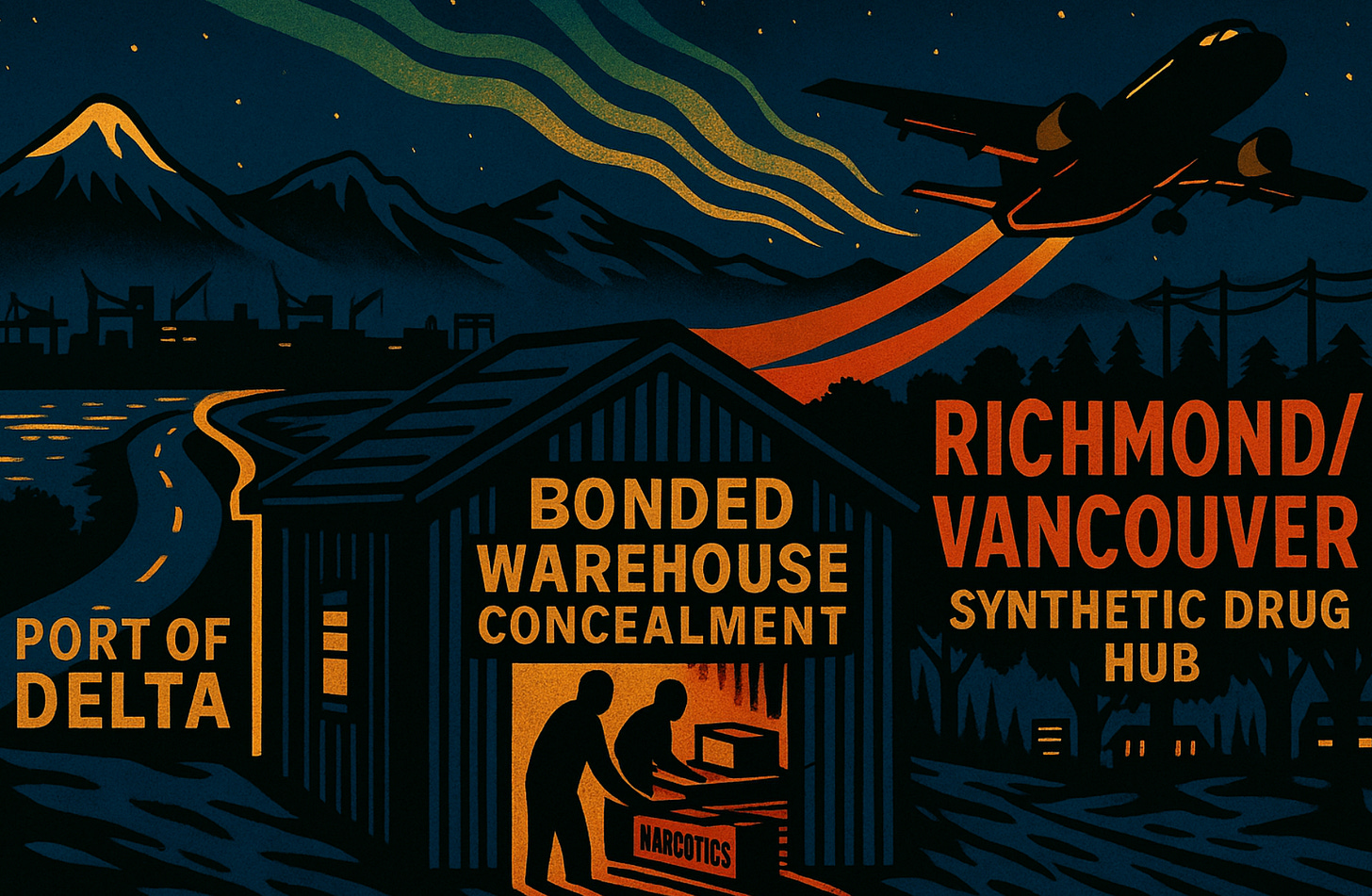U.S. Government Was Aware of Massive Chinese Fentanyl Seizure in Vancouver Long Before Ottawa Disclosure: Source
New half-tonne meth-coke export seizure underscores how Vancouver’s bonded warehouses and export corridors have become a blind spot in the global import-export narco-economy.
VANCOUVER — Border officers at Vancouver International Airport have intercepted more than half a tonne of cocaine and methamphetamine bound for Australia, a near record-breaking haul that underscores the deepening role of British Columbia as an export hub in global drug trafficking.
According to the Canada Border Services Agency, officers discovered 560 kilograms of narcotics concealed within a shipment of car parts during a September 3 inspection. The cache included 319 kilograms of cocaine packed into 300 compressed powder bricks and 241 kilograms of methamphetamine sealed in 110 vacuum-packed bundles.
The drugs were turned over to the RCMP, and investigators say the probe remains ongoing. The airport seizure follows The Bureau’s reporting this year on related export operations to New Zealand and Australia, and a string of major CBSA and RCMP actions in 2025 targeting Chinese-sourced chemical precursors arriving through Metro Vancouver’s ports.
In May, officers intercepted more than 4,300 litres of chemicals used to manufacture fentanyl, GHB, and methamphetamine at a Delta marine terminal — one of the largest precursor hauls in Canada’s history. While that seizure carried political implications amid President Donald Trump’s criticism of British Columbia as a fentanyl-trafficking hub, the operation was only publicly disclosed last week. A U.S. official not authorized to speak on the record told The Bureau that Washington was already aware of the May seizure.
Those containers, declared as industrial solvents and bound for Calgary, originated in China. They contained 3,600 litres of 1,4-Butanediol, 500 litres of Propionyl Chloride, and 200 litres of Gamma-Butyrolactone — all hidden in drums and jugs. Federal investigators believe the shipment was intended for clandestine drug-production sites across Western Canada.
The dual pattern — industrial precursors coming in, finished narcotics going out — has become emblematic of Canada’s role in the global synthetic-drug trade. U.S. officials, including President Trump, have continued to press Ottawa to intensify enforcement in British Columbia, which American intelligence agencies now describe as a key node in Chinese- and Mexican-controlled narcotics pipelines.
There has been quiet discussion among U.S. officials about the sincerity and pace of Ottawa’s response. One U.S. official familiar with the matter said fentanyl czar Kevin Brosseau’s recent talks with American counterparts suggest his office has an increasingly strong grasp of the transnational dynamics and that Canadian agencies are making good-faith efforts to strengthen investigations and enforcement posture.
“We are still trying to fix the relationship, but they are trying,” the official said. “But they don’t seem to be able to fully target the super-labs we know are operating, and the shipments of fentanyl that go up to Vancouver and then get sent down to the U.S. West Coast — including in bonded cargo.”
A Canadian enforcement source explained that bonded cargo allows container shippers to bypass routine search hurdles. The number of these facilities — and their proximity to known Asian organized-crime networks and vulnerable areas near First Nations lands surrounding the Vancouver port region — is a major factor in the city’s role in the Western Hemisphere narcotics trade. “The more of these bonded warehouses that you have, the less likely CBSA is going to be able to check all of them consistently because they’re physically all over the place,” the Canadian source said. “So this is why it’s so attractive to organized crime — it gives you another piece of the supply chain you can control.”
The source added that scores of CBSA narcotics-intelligence files are being escalated to the RCMP in Vancouver, which “simply doesn’t have the capacity to process the cases.”
“It’s a myriad of these combinations — that’s why we see so much of this here,” they said, adding that federal police often acknowledge receiving the intelligence but lack the resources to pursue enforcement. “We’ve sent it to federal; it goes through their intake process and they say, ‘We don’t have any assets to do anything with that. It’s just a no-case seizure.’ There were scores of them that came in, and we just didn’t have the capacity to act.”
Keep reading with a 7-day free trial
Subscribe to The Bureau to keep reading this post and get 7 days of free access to the full post archives.


